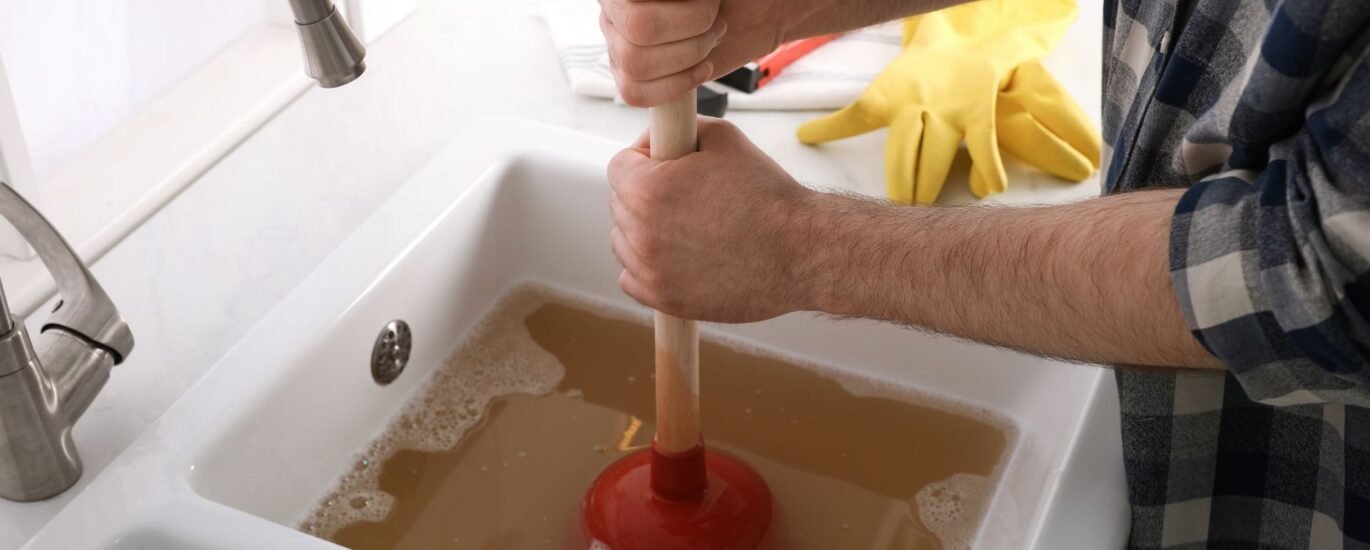Introduction
Not all clogs are created equal. Some are stubborn, deep-seated, or involve root intrusion or scale buildup. In such cases, basic snaking isn’t enough. In this post, we’ll dive into advanced drain cleaning techniques — hydro-jetting, root cutting, specialty tools — and when they’re needed. We’ll also loop back to inspection and how these techniques tie into preventative service.
Why “basic snaking” sometimes fails
A simple drain snake can clear soft debris and hair, but struggles with:
- Hard-packed grease or scale
- Tree roots growing inside pipes
- Debris lodged deep past elbows or bends
- Crusty buildup over long sections
If you keep experiencing the same clog even after snaking, your system might need more powerful tools.
Hydro-jetting: a high-power flush
What is hydro-jetting?
Hydro-jetting uses pressurized water streams (2,000 – 4,000+ psi, or more depending on system) to blast away:
- Grease, grime, and sludge
- Tree roots (slightly)
- Mineral scale
- Residue lining the pipe interior
Advantages of hydro-jetting
- Thorough cleaning of entire pipe walls
- Reaches deep or remote sections
- Less invasive than digging or pipe replacement
- Reduces risk of re-clogging or residue accumulation
Considerations and limitations
- Not always safe for very old or fragile pipes
- Operator skill and pressure control are critical
- Certain pipe materials may be more at risk
A full video inspection first helps confirm whether hydro-jetting is safe.
Root cutting / mechanical root removal
In older systems, tree roots often penetrate joints or cracks. Root cutting tools (similar to powered augers with blade attachments) allow:
- Precise removal of roots
- Access where hydro-jetting pressure can’t eliminate the intrusion
- Combined use with jetting to clean debris after cutting
After root cutting, a camera inspection ensures that the pipe interior is clear.
Specialty tools & techniques
Beyond jetting and root cutting, technicians may use:
- Rotary cutters / eels: flexible rotating cutters to grind away buildup
- Chemical root treatments: mild, pipe-safe chemicals to slow regrowth
- Pipe reaming tools: smooth interior edges after cutting
- Spot lining / cured-in-place pipe (CIPP): repair techniques if damage is found
The right mix depends on the problem discovered during inspection.
When to choose advanced methods
You should consider these techniques when:
- Previous simple cleaning hasn’t held
- Video inspection reveals scale, roots, or heavy buildup
- You have an older house with known plumbing challenges
- Multiple drains are affected, suggesting a main line issue
- You’re preparing for renovation or increased load (e.g. adding fixtures)
For those situations, pairing inspection + advanced cleaning is often the best approach.
How advanced service flows
Here is a typical advanced cleaning workflow:
- Initial inspection (camera) to locate problem areas
- Root cutting or mechanical removal if roots are present
- Hydro-jetting to clean debris, scale, grease
- Post-cleaning inspection to validate full clearance
- Optional chemical treatment to discourage regrowth
- Maintenance schedule tailored to system condition
Each step is precise and backed by inspection data.
Safety & pipe condition considerations
Advanced techniques are powerful — but must be used cautiously:
- Weak, corroded, or brittle pipes may not tolerate high pressure
- Joints or sections that are already failing may worsen
- Proper calibration of water pressure and tool torque is essential
- Technicians should be trained and equipment well maintained
A provider should assess condition before deploying high-stress methods.
Cost vs. benefit
Advanced techniques cost more initially, but often:
- Are more effective in one session
- Prevent repeat service calls
- Enable longer periods of trouble-free operation
- Avoid invasive repairs or pipe replacements
In many cases, paying for advanced cleaning once saves more over time compared to repeated quick fixes.
Preventive follow-through
After advanced cleaning, you should:
- Monitor drains regularly
- Schedule periodic inspections
- Use smart habits (see Blog 1 tips)
- Plan follow-ups based on severity (semiannual, annual, quarterly)
- Stay alert for early warning signs
Let advanced methods buy you breathing room — but stay proactive.
Real example: Before & after in Santa Barbara
Imagine a homeowner in a mid-century Santa Barbara house with repeated backups. After inspection, roots are found encroaching on a 4″ line. The provider:
- Cuts the roots mechanically
- Jet blasts full line to flush sludge
- Re-inspects camera to confirm perfect clearance
- Recommends semiannual maintenance
Result: no backups for years, stable flow, peace of mind.



